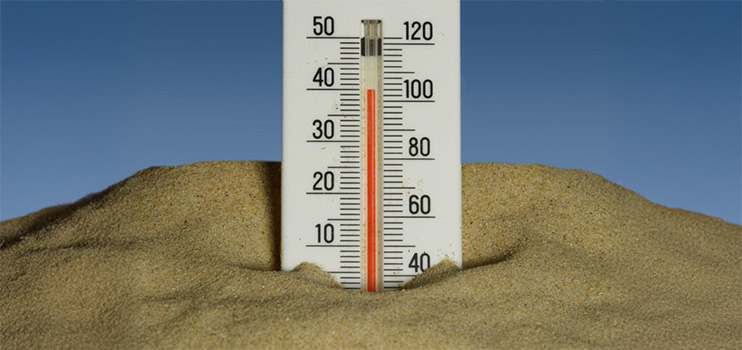Cooling Breath Techniques: Using Sheetali Pranayama for Summer Relief
In the midst of soaring temperatures and heat waves that seem to intensify each year, ancient wisdom offers us a remarkably effective cooling technique. Sheetali Pranayama, often called “the cooling breath,” provides not just physical relief from heat but also emotional and mental cooling that can transform our experience of hot weather.
What is Sheetali Pranayama?
Sheetali is one of the most accessible breathing practices from the yogic tradition. Its name directly translates to “cooling” or “calming,” revealing its primary purpose – to cool the body and calm the mind. Unlike most breathing techniques that emphasize nasal breathing, Sheetali uniquely involves inhaling through the mouth using a rolled tongue.
This simple yet powerful practice was developed specifically to reduce body temperature and create a sense of inner coolness, making it perfectly suited for our increasingly warm climate.
The Climate Connection

As global temperatures rise and heat waves become more frequent, our bodies and minds face greater stress from environmental heat. Urban heat islands, where concrete and buildings absorb and radiate heat, can make city temperatures significantly higher than surrounding areas.
This is where Sheetali becomes particularly valuable. Rather than relying solely on external cooling methods like air conditioning (which contributes to climate issues), we can activate our body’s natural cooling mechanisms through breath.
How Sheetali Works?
When we inhale through our rolled tongue, the air passes over the moisture of the tongue and creates a cooling effect similar to how evaporation cools our skin when we sweat. This cooled air then travels to our lungs, throat, and eventually throughout our bloodstream.
The practice also affects the hypothalamus – our internal thermostat – helping to regulate body temperature from within. This makes Sheetali not just a temporary relief but a way to improve our body’s overall heat adaptation.
Basic Sheetali Technique

- Find a comfortable seated position with your spine straight
- Extend your tongue outside your mouth and roll the sides up to form a tube
- Inhale slowly and deeply through this tongue-tube
- Close your mouth and exhale normally through your nose
- Repeat for several rounds, focusing on the cooling sensation
For beginners, nine rounds is a good starting point. As you become comfortable with the practice, you can extend to 5-10 minutes of continuous practice.
Deepening the Practice
As you grow more familiar with the basic technique, you can explore variations:
Retention Variation: After inhaling through your rolled tongue, hold the breath comfortably before exhaling through your nose. This allows the cooling effect to penetrate deeper into your system.
Counted Variation: Count your inhalation, retention, and exhalation in specific ratios. Begin with equal counts (1:1:1), then gradually progress to more advanced ratios like 1:2:2 or 1:4:2 as your capacity increases.
When to Practice?
Sheetali is incredibly versatile:
- During heat waves or hot summer days
- After physical exercise when your body is naturally heated
- Following heating pranayama practices
- When experiencing emotional “heat” like anger or frustration
- Before meditation to create a calm, cool mental state
For maximum climate relief, practice outdoors in the shade during morning or evening hours when the air is slightly cooler but you still need relief from the heat.
Benefits Beyond Cooling
While climate relief might be your initial motivation for practicing Sheetali, its benefits extend far beyond physical cooling:
Physical Benefits:
- Reduces body temperature
- Alleviates excessive thirst
- Improves digestion
- Helps regulate blood pressure
- Purifies the blood
- Can help reduce fever
Mental-Emotional Benefits:
- Creates a calm, centered mental state
- Reduces anger, irritability, and frustration
- Promotes emotional balance
- Helps soothe anxiety
- Creates a feeling of refreshment and renewal
Practical Considerations
While Sheetali is generally safe and beneficial, a few considerations will help you practice effectively:
- Avoid practicing in highly polluted environments since you’re breathing directly through your mouth
- If you can’t roll your tongue (which is genetically determined), try the sister practice Sitali where you inhale through slightly parted teeth
- Those with very low blood pressure or chronic cold conditions should practice with moderation
- Practice in a clean environment to avoid inhaling particulate matter
Integrating Sheetali Into Daily Life
The beauty of Sheetali lies in its simplicity and accessibility. Even busy people can incorporate it into daily routines:
- Take three cooling breaths before stepping out into hot weather
- Practice for five minutes after your shower on hot mornings
- Use it as a quick refresh during your lunch break
- Incorporate it into your evening routine to cool down before sleep
The Cooling Breath in a Warming World
As our climate continues to change, practices like Sheetali become increasingly relevant. Beyond providing personal relief, they represent a shift in how we approach environmental challenges – working with our internal resources rather than depending solely on external technologies.
This inner cooling creates resilience on multiple levels. When we can regulate our own temperature and comfort, we become less dependent on energy-intensive cooling methods and more adaptable to changing conditions.
The yogic tradition reminds us that we have remarkable internal resources. Sheetali Pranayama is a gift from this tradition that offers a practical tool for navigating our warming world with greater ease, comfort, and presence.
By learning this simple technique, you gain a portable cooling system that requires no electricity, creates no emissions, and connects you to ancient wisdom perfectly suited for modern challenges.
~ Written by Ritika S

